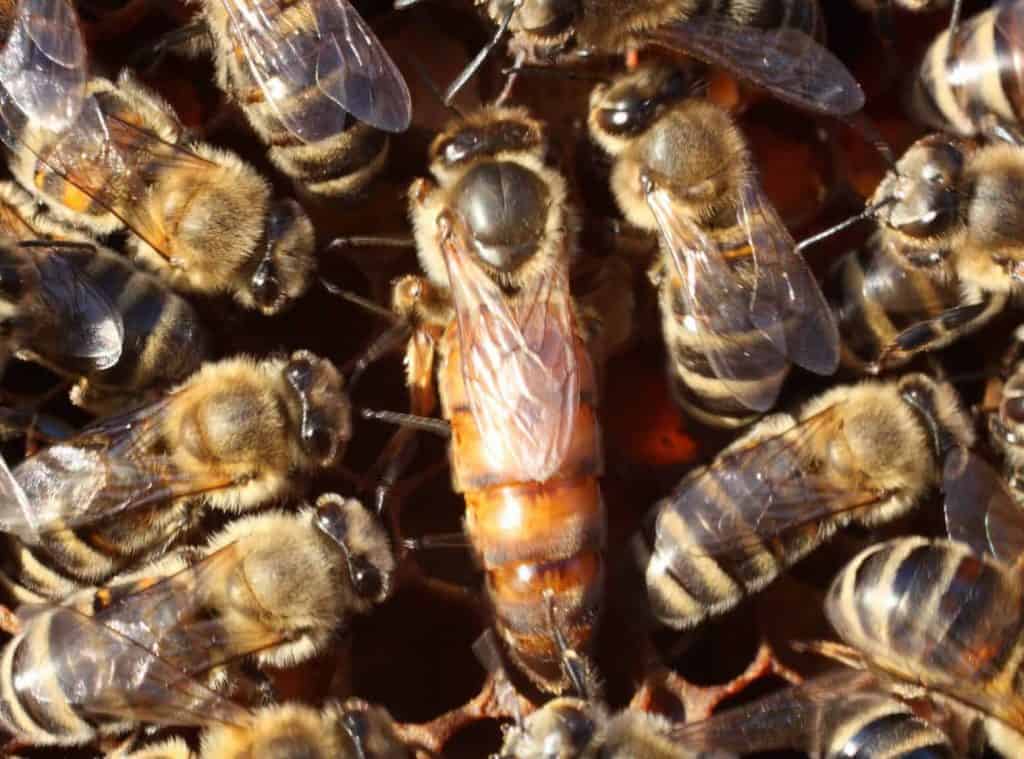In the hive, everything revolves around the queen bee. She is the most important member of the entire group as she is the only fertile female. She is not only the queen, but the mother of all bees.
Worker and drone bees play different roles in the hive system. However, the queen bee is at the heart of what rules them. So what happens when the queen bee – the most important member of the colony – dies? Depending on how the queen dies, the colony will act differently.
The role of the queen bee
The queen bee has many important tasks. However, their most important task is spawning. As the only fertile female bee, she lays up to 1,500 eggs per day. She lays one egg per each cell.
The quality of the queen is inseparable from her reproductive capacity. This has profound implications for the overall functioning of the colony’s honey production and hive operations.

Queen failure is often cited as the main cause of winter death and colony collapse. Therefore, it is important to ensure that the reproductive capacity of the queen bee is strong in order to maintain the productivity and livelihood of the hive.
When the queen bee dies
When a queen bee dies or is murdered—whether by hive members on purpose or by an outside force—the rest of the hive population must find a new queen. This is critical to restoring order and normalcy to the colony, surviving through the winter, and ensuring continued population growth.
The method for selecting a new queen revolves around the cells in the hive:
- Replacing
- Emergency situations
- Grouping
Superseded cells
The queen bee produces various pheromones that inhibit certain behaviors in the worker bee caste. Failure to disperse these pheromones or lay the proper number of eggs can cause worker bees to expel them — ensuring the survival and productivity of the hive.
If they decide to replace them, the worker bees build one or more replacement queen cells. Older or less potent queens then lay eggs in each queen cell. This is the last task the old and incompetent queen bee completes before the worker bees kill her.
When the first queen emerges, the remaining cells are destroyed. This is their new queen now. The old queen and her new successor can live together for several months until the original queen dies.
Emergency cells
When the queen bee dies or is killed naturally, the worker bees rebuild some of the worker bees into queen cells. This is usually located in the comb-like area that contains the brood and larvae. The larvae are then fed special royal jelly throughout the larval period. Worker bees further regulate these larvae to become queen bees.
This action is urgent and unplanned. Without the queen bee, the colony cannot function properly because no pheromones are released. The colony is in chaos and needs to find a new queen as soon as possible. Likewise, these pheromones control the movements of all workers in the hive.
Once the fertilized eggs hatch and new queens emerge, they will mate with drones (drones) and try to kill other virgin queens. The last remaining queen begins to lay eggs and take on the role of the new queen. The whole process takes about a month.
Swarming cells
When the swarm impulse is triggered, several queen cells form on the sides or bottom of the hive. In these cells, the queen lays eggs regularly over several days. The old queen leaves the colony with half of her workers to start a new colony elsewhere.
This usually happens when the hive becomes overcrowded and over constrained. The old queen leaves willingly and a new queen is born and replaces her. In this case, however, the colony occurs after the death of the queen bee—whether sick or old. Colonies can also occur as queens age, fail to lay enough eggs, and numbers begin to decline.
Scout bees fly out before new queen hatches, looking for new places to start its hive. The first group leaves with the new queen. A few days later, other swarms come. Some worker bees remain in the old colony; however, they are generally weaker.
In summary
Sometimes, after a queen bee dies, worker bees are unable to raise a new queen bee. If this happens, the colony has no chance of long-term survival. The presence of the queen bee in the hive is necessary for colony survival and productivity. Their health and fertility are critical to the overall functioning of the hive and its thousands of members.
When a queen bee dies, the colony responds in various ways, trying to raise new queen bees. The pheromone it releases controls the behavior of the entire bee system. Without this, the hive stops functioning and the community falls into chaos, which is why the queen bee is at the center of the hive.